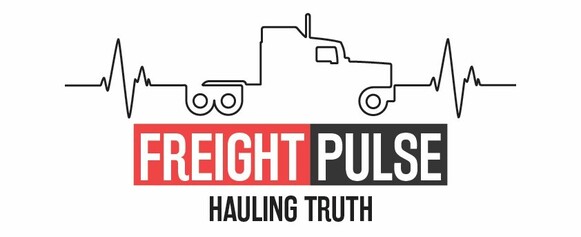The Commercial Vehicle Safety Alliance (CVSA) International Roadcheck returns this year from May 13–15, 2025, and motor carriers across North America must be ready. This annual three-day enforcement blitz is the largest targeted inspection initiative on commercial motor vehicles, involving tens of thousands of inspections across the U.S., Canada, and Mexico.
To help avoid costly violations, out-of-service (OOS) orders, and long-term safety impacts, carriers and drivers must take a proactive approach to compliance especially in this year’s focus areas: false logs and tire conditions.
What Is Roadcheck?
International Roadcheck is a high-visibility, high-volume inspection initiative led by CVSA with participant from the Federal Carrier Administration (FMCSA), Canadian Council of Motor Transport Administration (CCMTA) and Mexico’s Secretaria de Infraestructura, Comunicaciones y Transportes (SICT).
Each year, thousands of certified inspectors perform Level I inspections, which are the most comprehensive.
These involve:
- A detailed check of driver operating requirements (e.g., credentials, hours-of-service compliance, impairment, and seat belt use).
- An examination of vehicle mechanical fitness, including brakes, tires, lights, cargo securement, and more.
2025 Focus Areas
1. False logs- Inspectors will look closely at electronic logging device (ELD) records and paper logs for signs of falsification.
2. Tire conditions- This includes tread depth, inflation, mismatched tires, exposed cords, and overall tire safety.
What We Learned from Roadcheck 2024
The 2024 Roadcheck saw 48,761 inspections conducted. The results continue to show recurring safety issues that carriers can’t afford to ignore:
– 9,345 vehicles (23%) were placed out of service.
– 2,290 drivers (4.8%) received out-of-service orders.
Top Vehicle Violations (2024)
-Defective service brakes – 25%
-Tire-related issues – 20.8%
-Other brake system violations – 18.3%
-Lighting problems – 11.6%
-Cargo securement failures – 9.6%
Together, brakes, tires, and lights accounted for over 75% of all OOS vehicle violations.
Top Driver Violations
-Hours of service (HOS) violations
-False or incomplete logs
-No valid CDL or medical certificate
-Suspended or expired licenses
These patterns reinforce the need to go beyond annual focus areas and consistently prioritize fundamentals like braking systems, driver qualifications, and HOS accuracy.
How to Prepare for Roadcheck 2025
1. Ensure Vehicle Readiness- Well-maintained vehicles reduce risk not just during Roadcheck, but year-round. Carriers should:
- Complete all scheduled maintenance and annual inspections.
- Use a maintenance tracking system like J.J. Keller’s Encompass® or other fleet management tools to monitor compliance.
- Inspect tires carefully, considering this year’s emphasis:
– Ensure minimum tread depth of 4/32″ on steer tires and 2/32″ on others.
– Check for visible damage: sidewall bulges, deep cuts, exposed belts or cords.
– Verify proper inflation, using a calibrated gauge on cold tires.
Also inspect valve stems, mismatched duals, and tread separation, which are common red flags.
2. Prepare Drivers Thoroughly- Drivers must be equipped with the training and awareness needed to pass inspections confidently.
- Reinforce pre-trip, en-route, and post-trip inspections.
- Practice proper defect reporting and use of Driver Vehicle Inspection Reports (DVIRs).
- Focus tire inspection training on:
– Spotting inflation issues
– Detecting irregular wear
– Identifying unsafe tread depth
Encourage drivers to conduct mock inspections or ride-alongs with safety managers to simulate real inspection scenarios.
3. Verify Driver Credentials and Qualification Files- Many driver-related violations are administrative yet avoidable:
- Confirm that Driver Qualification Files (DQFs) are complete and current.
- Validate that drivers hold the correct CDL class and endorsements.
- Ensure medical certificates are valid and not nearing expiration.
- Remind drivers to carry:
– A valid driver’s license
– Medical certificate
– Proof of insurance
– Registration and shipping papers
Digital document management systems can automate reminders and reduce human error.
4. Audit and Reinforce Hours of Service Compliance- With false logs under scrutiny in 2025, HOS compliance must be airtight.
- Retrain drivers on ELD use and hours-of-service rules.
- Conduct log audits to flag:
– Driving without logging in
– Ghost co-drivers
– Personal conveyance misuse
– Improper edits or annotations - Compare logs with supporting documents (fuel receipts, tolls, GPS data) to detect discrepancies.
- Review exception reports and investigate any red flags.
Carriers using in-cab coaching and log validation software can significantly reduce HOS violations.
What’s at Stake: The Cost of Non-Compliance
Failing Roadcheck inspections can result in immediate and long-term setbacks:
– Out-of-service orders delay freight and disrupt schedules.
– CSA scores (Compliance, Safety, Accountability) can take a hit, affecting insurance premiums and shipper confidence.
– Poor performance may trigger FMCSA audits or compliance reviews.
– Carriers risk receiving Conditional or Unsatisfactory safety ratings, jeopardizing contracts with major brokers and customers.
– Some shippers may impose exclusion policies for carriers with recent OOS events or poor safety ratings.
These consequences can impact business reputation, profitability, and driver retention.
Make Roadcheck a Launchpad for Lasting Safety
While Roadcheck 2025 lasts just three days, the preparation for it should drive lasting improvements. Treat this event as a strategic opportunity to identify and eliminate weak points in your safety and compliance systems.
By focusing on tire safety, log accuracy, and driver readiness, carriers not only reduce the chance of violations they foster a culture of compliance and proactive risk management.
Remember: Safety is not a one-time event it’s a continuous commitment.

